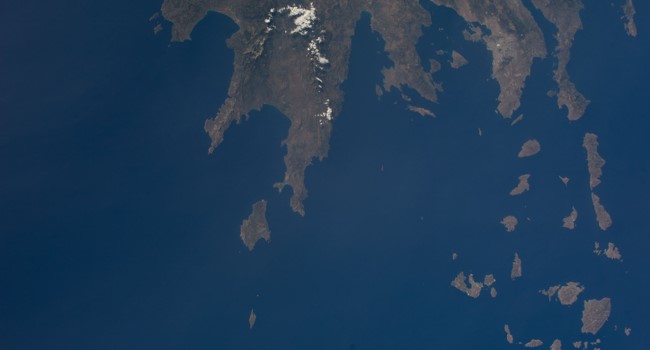
Is the Atlantis legend based on a real place?
Before answering that question, we need to consider the origin of the Atlantis legend.
Here is an excerpt from the entry “Atlantis” published in Ancient History Encyclopedia.
“The story of Atlantis first appears in Plato’s Timaeus, one of his later works. The dialogue’s title derives from its protagonist, a fictional Pythagorean philosopher from Southern Italy who discusses the soul with Socrates. This particular dialogue is not a philosophical one, though, but rather an exercise in sophistry and involves an extremely long monologue by Timaeus on the creation of the world. Philosophical ideas are discussed but the age-old question arises of what exactly are Plato’s ideas and which are merely those of his characters? The passage on Atlantis is actually spoken early in the dialogue by Critias, a Sophist who lived c. 460 to 403 BCE. Significantly, Critias, like all Sophists (as Plato himself explained in his Phaedrus dialogue), presents his ideas with exaggeration and embellishments to capture the attention of the listener and convey the essence of the ideas only. All is opaque, nothing is exact. Whatever literary means necessary must be taken to express complex philosophical ideas and make them more understandable. It is, perhaps, with this in mind, that one should read the Atlantis myth.”
So, Plato’s intent is to provide a philosophical discussion, not a historical account of an ancient place.
Still, could Plato’s Atlantis be based on a real place? If so, what place could have “disappeared in the depths of the sea” the way that Plato describes?

Greek native and author Christos Djonis believes that the location of Atlantis matches that of the Cyclades Islands in the Mediterranean Sea. He writes, “It seems that 11,000 years ago, according to Plato the story of Atlantis took place, many of the Cyclades Islands were connected by a flat terrain, today called the “Cyclades Plateau.” This now-400 feet (122 meters) underwater plateau formed the body of a large island, while the modern islands of the Cyclades fashioned rows of mountains that emerged in all the ‘right places,’ when those are compared to Plato’s story!”
Regarding Plato’s description of Atlantis, Ancient History Encyclopedia states, “The island was mountainous and rose straight from the sea. It had fertile central plains with a central hill surrounded by rings of sea and land which were created by Poseidon to protect his people.”
This is how the science newsletter Biodiversity Science describes the Cycladic Islands:
“The Cycladic Islands are the exposed mountain tops of the currently submerged Cycladic Plateau (CP). During the Pleistocene glaciations, the CP was more or less fully exposed and connected to what is now mainland Greece. Conversely, the CP was submerged during interglacial periods to different extents, depending on the intensity of the warming event. This cycle happened multiple times, characterizing the Cyclades as a complex land-bridge island landscape in the southern Aegean that has been repeatedly connected and disconnected due to eustatic sea-levels. About 200 thousand years ago (KYA) was when the CP most recently separated from mainland Europe at the beginning of the last interglacial period, existing as one large island (~ 6,500 km²) sometimes referred to as Cycladia. Subsequent to the end of the last glacial maximum (about 20-18 KYA), Cycladia began to fragment as the Aegean rose, submersing the lower elevations of the large island. The initial rise in sea-level was rapid (about 110 m in the first 13 KY), until about 5 KYA when the rising slowed down to about one metre every thousand years. This process has created the present day geography of the Cycladic archipelago.”
Here is a description of Cyclades Plateau given by Greek researchers Vasilios Kapsimalis et al. in their report Geoarchaeological challenges in the Cyclades continental shelf (Aegean Sea):
“The present day Cyclades Plateau in Central Aegean Sea (Greece) is characterised by the presence of numerous small islands and an extended shelf. The interpretation of high-resolution seismic profiles reveals that the shelf has been subjected to successive stages of submergence and emergence due to the Quaternary relative sea level changes. This has resulted to shelf seabed erosion by sub-aerial conditions or palaeo-surfaces burial by thick deltaic/coastal sequences. Within this complicated habitat, it is very difficult for Palaeolithic human remains to be discovered due to their elimination by physical processes. . . The low-lying shelf areas, with an average slope of 1.58 degrees, perhaps provided appropriate conditions for sustaining human, animal and plant life. Therefore, parts of this area could present high geoarchaeological interest improving our knowledge in relation to human activities and associated environments during Uppermost Palaeolothic, Mesolithic and Neolithic.”
Whether or not the Cyclades Plateau matches Plato’s description of Atlantis is something for Greek scholars to figure out. If it did, then wouldn’t that be something?
Featured Image taken from the International Space Station. In Public Domain. Image shows Greece and the Cycladic Islands.
The “Wanted” posters say the following about David: “Wanted: A refugee from planet Melmac masquerading as a human. Loves cats. If seen, contact the Alien Task Force.”
















